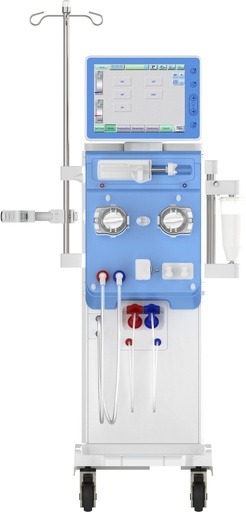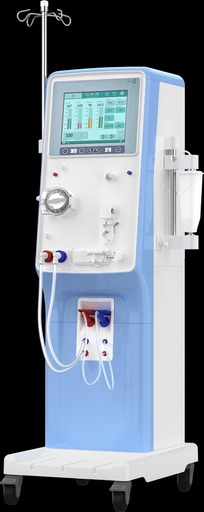Introduction
Dialysis machines are life-saving devices for people with chronic kidney disease (CKD) or kidney failure. These machines help to filter waste and excess fluid from the blood, performing the critical function that failing kidneys no longer can. In this article, we'll dive deep into how dialysis machines work, explore different types of dialysis, and provide valuable insights into choosing the right option for your health needs.
1. How Dialysis Machines Work
Dialysis machines are designed to mimic kidney function by removing waste and excess fluids from the bloodstream. There are two main types of dialysis: hemodialysis and peritoneal dialysis.
| Dialysis Type | Process | Location | Time Commitment | Equipment Required |
|---|---|---|---|---|
| Hemodialysis (HD) | Blood is pumped through a dialyzer (artificial kidney) to filter waste | Dialysis center or home | 3-5 hours/session, 3 times a week | Hemodialysis machine, dialyzer, access device |
| Peritoneal Dialysis (PD) | Dialysate solution is absorbed in the peritoneum, filtering blood internally | Home | Daily; each session takes 30 minutes to 1 hour | PD catheter, dialysate solution |
The Hemodialysis Process
In hemodialysis, blood is filtered externally through a dialyzer, which functions as an artificial kidney. The dialyzer contains fine fibers that filter out waste and toxins while retaining necessary substances. After filtration, the cleansed blood is returned to the body. This process typically occurs three times a week for 3-5 hours at a time.
The Peritoneal Dialysis Process
Peritoneal dialysis uses the lining of your abdomen (the peritoneum) as a natural filter. A special fluid called dialysate is introduced into the peritoneal cavity through a catheter, where it absorbs waste products before being drained. Unlike hemodialysis, peritoneal dialysis can be performed at home, offering greater flexibility in terms of timing and location.
2. Comparing Dialysis Machines
Choosing the right type of dialysis depends on several factors, including lifestyle, medical condition, and the availability of equipment. Here’s a comparative overview of the two main types:
| Factor | Hemodialysis | Peritoneal Dialysis |
|---|---|---|
| Location | In-center or at home | At home, office, or while sleeping |
| Flexibility | Limited; fixed schedule | High; can fit into daily routine |
| Time Commitment | 3-5 hours, 3 times per week | 30 minutes to 1 hour daily |
| Risk of Infection | Lower | Higher (due to catheter use) |
| Lifestyle Impact | Disruptive for those with busy schedules | More freedom, but requires regularity |
In terms of technology, hemodialysis machines tend to be larger and more complex, requiring a dialyzer and significant space. Peritoneal dialysis machines are smaller and simpler, making them ideal for home use.
3. Choosing the Right Dialysis Treatment
When selecting the right dialysis option, it’s essential to consider personal and medical factors. Hemodialysis is generally recommended for patients who need close medical supervision or are uncomfortable managing treatment themselves. Peritoneal dialysis, on the other hand, offers more independence but requires a higher level of self-management.
Factors to Consider:
- Lifestyle: Do you need flexibility for work, travel, or family commitments?
- Medical Condition: Do you have complications that might be better managed in a clinical setting?
- Comfort with Medical Equipment: Are you comfortable handling catheters and dialysate solution at home?
According to the National Kidney Foundation, around 14% of dialysis patients choose peritoneal dialysis because of the flexibility it provides(National Kidney Foundation.)
However, hemodialysis remains more common, with 86% of patients opting for in-center treatment due to the perceived reliability of the care they receive(Kaiser Permanente Healthy).
4. Pain Management and Comfort During Dialysis
Dialysis isn't typically painful, but certain aspects can cause discomfort. For example, during hemodialysis, the insertion of needles for blood access can sting. Over time, patients become accustomed to this sensation, and numbing creams can help manage pain.
For peritoneal dialysis, bloating is a common issue as the abdomen fills with dialysate fluid. Adjustments in fluid levels or using tidal dialysis (partial fill) can alleviate discomfort(freseniuskidneycare).
Tips for a Comfortable Experience:
- Dress warmly during dialysis, as many patients feel cold when blood is circulated outside the body.
- Bring distractions like books, movies, or puzzles to pass the time during treatment.

5. Side Effects and Complications
Dialysis patients may experience side effects, including:
- Low blood pressure (hypotension) during or after hemodialysis
- Muscle cramps due to fluid removal
- Nausea and fatigue
- Infection risks for both types of dialysis, especially peritoneal dialysis due to catheter use
Monitoring these side effects with your healthcare team is crucial to adjust treatment and ensure your comfort.
6. Innovations in Dialysis Technology
Recent advancements in dialysis technology are focused on improving patient comfort, accessibility, and outcomes. Wearable artificial kidneys, still in the experimental phase, aim to provide continuous dialysis and eliminate the need for large machines and treatment centers.
| Innovation | Description | Potential Benefits |
|---|---|---|
| Wearable Artificial Kidney (WAK) | A portable device that continuously filters blood | Freedom from scheduled sessions |
| Portable Hemodialysis Machines | Compact devices for home use | Convenience and flexibility |
| Advanced Dialyzers | Improved filters that work faster and more efficiently | Shorter session times |
7. Conclusion
Dialysis is a significant life change, but with the right equipment and support, it can enable patients to live a relatively normal life. Whether you opt for hemodialysis or peritoneal dialysis, understanding the pros and cons of each method will help you make an informed decision about your treatment.

Key Takeaways:
- Hemodialysis is better suited for patients who prefer structured, in-center care.
- Peritoneal dialysis offers flexibility and convenience, but requires discipline.
- New technologies are emerging to make dialysis more portable and less disruptive to everyday life.
Next Steps: Speak to your healthcare provider to determine the best dialysis option based on your health, lifestyle, and personal preferences.
By understanding your dialysis machine and treatment options, you’ll be better equipped to manage kidney failure while maintaining a high quality of life.
→Click here to learn more about our dialysis machine
or